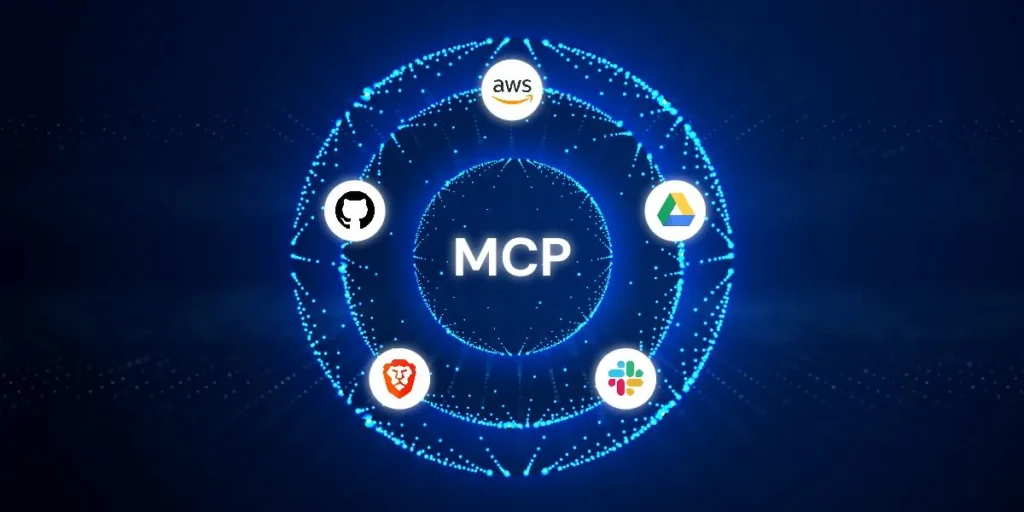
Artificial Intelligence (AI) is transforming software development, not only in terms of capabilities but also in terms of how developers work with intelligent systems. A still relatively obscure but incredibly impactful innovation driving this shift is the Model Context Protocols (MCP).
As AI development services increasingly create applications that interface with large language models (LLMs), vision transformers, and other AI agents, they encounter the need for structured communication between applications and AI models. That’s where MCPs come into play.
Model Context Protocols have been introduced by Anthropic to address this challenge by enabling reliable, context-aware, and modular integrations between systems and models. It allows LLMs to use specialized tools and protocols to overcome limitations of outdated information and functionalities.
In this article, we’ll explain what MCP is in detail, how it works, and its importance.
Understanding Model Context Protocols
An MCP establishes a structured framework for software applications to share context with AI models, particularly large and general-purpose ones. It ensures that relevant information is presented to the model in an interpretable format.
Think of MCP as a “contract” between an application and an AI model, specifying:
- What contextual information should be shared (e.g., user history, current app state, interaction details).
- How that data is formatted (schemas, tokens, metadata).
- How the model should interpret or prioritize various pieces of information.
MCPs allow developers to ensure AI systems perform accurately, consistently, and safely.
What do Model, Context, and Protocol mean
In MCP, the Model, Context, and Protocol each represent a foundational aspect of MCP design.
1. Model
The Model is the brain of the system. It determines how data is structured and how information is processed.
In traditional software development, the Model could be a database or a set of rules that tell a program how to process information.
However, in AI software development, it can also be a neural network that learns to understand languages, recognize images, or predict future events.
Without a Model, a system wouldn’t know how to organize information, make decisions, or react to inputs. It’s the foundation that everything else builds on.
2. Context
Context is what gives the Model real-world meaning. It’s the situation or environment that changes how the Model should act at any given moment.
Think of it like this: An AI chatbot doesn’t answer the same way to every question. It adjusts its replies depending on the conversation.
Context includes things like user actions, outside conditions, and system status. Without understanding Context, even the smartest Model could easily give wrong or useless results.
3. Protocol
The Protocol is the set of rules that makes sure the Model and Context talk to each other correctly.
Protocols handle:
- How different parts of a system share information.
- How updates to the Context (like new user input) reach the Model.
- How the Model sends back decisions or actions based on new information.
In real-world systems, protocols control things like API connections between apps, communication between small services in large software systems, and data transfers between AI tools.
Protocols are essential because they keep everything organized, efficient, and secure.
How Model Context Protocols work
MCPs work in the backend through communication between these three parts:
1. Host
It is an application running the AI agent, such as an IDE (Integrated Development Environment).
2. Client
Clients are the tools which communicate with the MCP server.
3. Server
MCP servers handle backend API interactions.
The importance of MCPs in AI-driven software development
As LLMs and other AI systems become integral to tools like IDEs, customer management platforms, and even games, ensuring Context alignment becomes critical. MCPs provide significant benefits that help achieve this alignment:
1. Minimizing AI hallucinations
When AI models operate without sufficient or clear context, they can produce irrelevant or inaccurate outputs. This phenomenon is known as “hallucination.” MCPs reduce this risk by structuring and grounding the information fed to the model, thus improving reliability.
2. Maintaining consistency across interactions
MCPs allow AI systems to retain session memory, define roles, and incorporate app-specific settings to deliver consistent behavior across multiple interactions or user sessions.
3. Modular AI workflows
MCPs enable developers to design modular applications where AI agents handle specific tasks, each supported by its own contextual frame. This approach enhances scalability and makes managing complex workflows easier.
4. Handling multimodal context
Applications using text, images, voice, or structured data benefit from MCPs, which coordinate how these inputs are presented to models. For example, in educational software, MCP can integrate spoken queries with visual data (like math problems) to provide accurate and personalized responses.
Key components of MCP
An effective MCP framework includes:
| Component | Description |
| Context schema | Defines types of data shared (e.g., user preferences, instructions). |
| Memory management | Manages persistence of context across tasks or sessions. |
| System role configuration | Allows developers to set the model’s rules, boundaries, or “personality.” |
| Dynamic context injection | Pulls live contextual data from apps during runtime. |
| Token budgeting | Ensures contextual data stays within model limits. |
Applications of MCP
- AI developer tools: Code assistants like GitHub Copilot use MCPs to pass file contents, project structure, and cursor position to AI models, ensuring seamless contextual integration.
- Chatbots and virtual assistants: MCPs help customer support bots access user profiles, prior interactions, and backend data to deliver personalized responses.
- Multi-agent systems: In systems involving multiple AI agents, MCP coordinates contextual data flow, which allows them to collaborate effectively and share tasks.
Benefits of MCPs
Adopting MCPs offers developers and AI architects several benefits, including:
- Predictable AI behavior
- Easier debugging and clearer insights into AI decisions
- Scalability across diverse application domains
- Improved user experiences through coherent interactions
- Separation of application logic from complex model prompt engineering
Challenges and future directions
While MCPs offer compelling advantages, they come with challenges as well:
- Lack of standardization: Most MCP implementations are proprietary or ad-hoc.
- Token constraints: Overloading the model with context can lead to inefficiencies, while too little context can degrade outputs.
- Security concerns: Ensuring sensitive user data is securely handled is vital.
- Difficult debugging: Context’s impact on model behavior isn’t always easy to trace without specialized tooling.
Looking ahead, MCPs are likely to evolve to:
- Enable multi-model orchestration, combining LLMs, vision models, and voice agents
- Integrate ethical governance policies for responsible AI development
- Adopt standardized protocols across industries
Emerging tools such as OpenAI’s Function Calling, LangChain’s Context Management, and Anthropic’s system prompts are early indications of MCPs gaining traction in the AI ecosystem.
Final thoughts
The question in AI has shifted from “Can the model do this?” to “Can the model do this accurately, consistently, and safely—in context?” MCPs answer that question, offering developers a structured interface to manage contextual communication with AI models.
For teams designing AI-powered applications, MCPs are foundational in the development process. As MCPs continue to mature, they are set to play a critical role in software development, which will enable smarter and more intuitive AI systems.
Xavor is a leading AI company that is adept at working with the latest innovations like MCP. We have years of experience working with some of the most advanced AI/ML projects, which enables us to make viable AI solutions for businesses like yours.
Ready to step into the world of AI? Contact us at [email protected].
